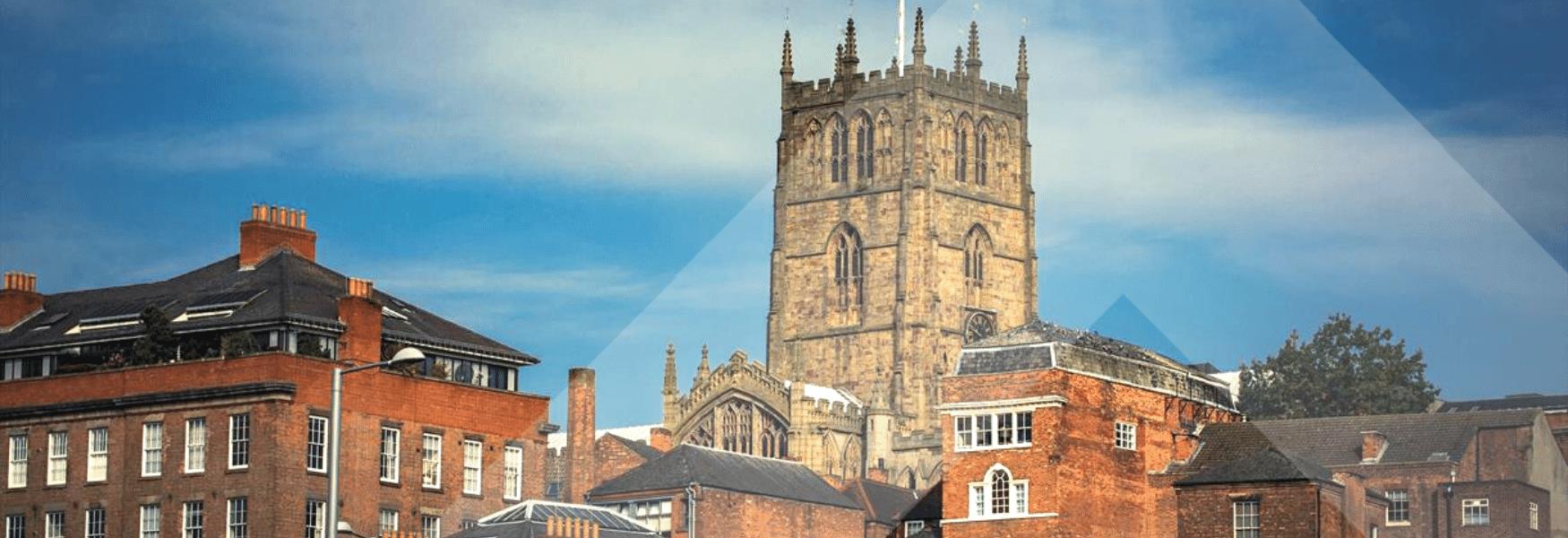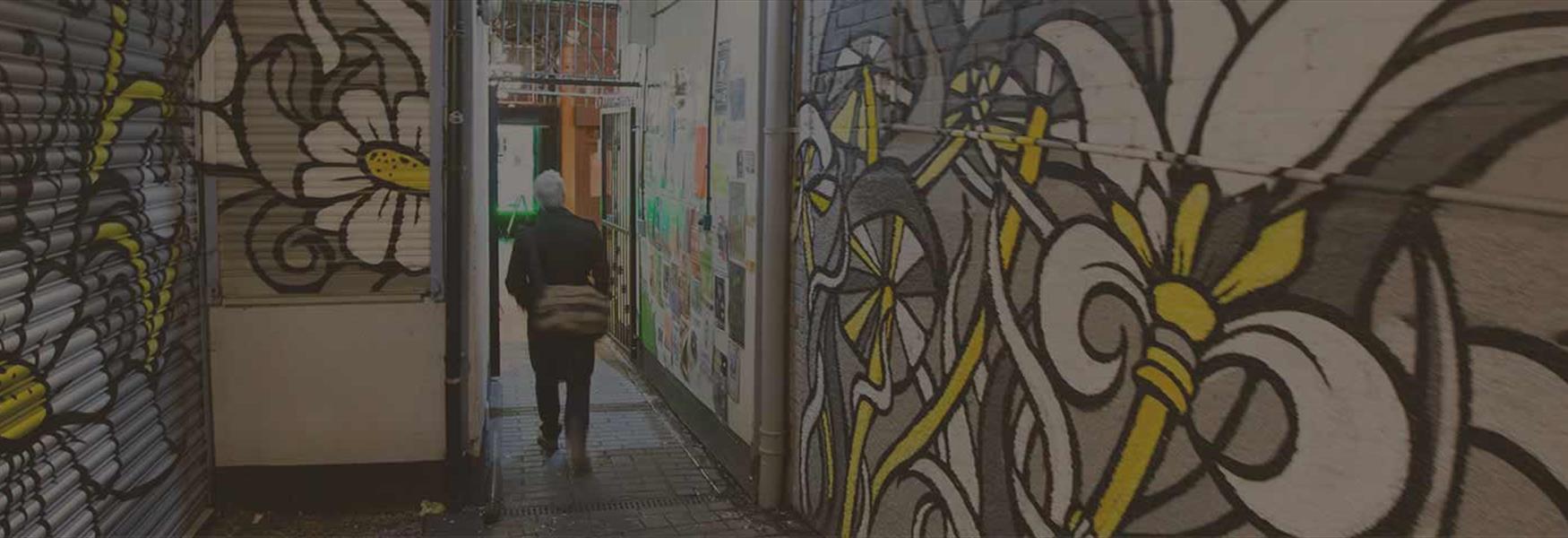Telling the stories of past lives in the county’s rural villages, cities and market towns, churches bring to life the history of Nottinghamshire in such an exciting way.
This is one of England’s loveliest cathedrals. With its majestic Norman nave and glorious 13th century Chapter House, it’s one of the least known jewels in the crown of Nottinghamshire. In 965 a Minster church was first established. The Normans decided to rebuild it in 1108 and the work was completed by approximately 1150.
During the Civil War, the building was seriously damaged by Scottish troops, who completely vandalised the Archbishop's Palace. In 1881, the Minster’s distinctive ‘Pepperpots’ (pyramidal spires of lead), unique in the UK, were added to the west towers.
Children will enjoy hunting for the mysterious ‘Green Men’ faces among the carved stone foliage of the Chapter House and the ten carved mice created by modern craftsman, Robert Thompson. The venue also hosts various seasonal events including outdoor theatre and family trails.
Nottingham Cathedral (also known as the Cathedral Church of St Barnabas) was designed and built under renowned architect A.W.N. Pugin. His other ntoable works include designing the interior of the Palace of Westminster and the iconic Elizabeth Tower, which houses Big Ben. The foundation stone was laid by Bishop Nicholas Wiseman in 1842, who had brought the relics of Saint Barnbas from Rome with him. At the time of its opening in 1844, the Cathedral was the largest Catholic church to have been built in England since the Reformation.
The Cathedral has been home to choral music since its consecration and today boasts a flourishing Music Department with the Cathedral Choir and Cathedral Youth Choir.
The Grade I listed St Mary's Church is the largest remaining Medieval building in Nottingham, and the third church to stand on this historic site in the Lace Market.
The church is mentioned in an early ballad, which describes the capture - and subsequent escape of - Robin Hood, after he visited the church.
Many tourists also visit the Church of St Mary in Edwinstowe, where according to legend, Robin Hood and Maid Marian were wed. The Church was built around 1175 and is still used as a place of worship.
Believed to be Nottingham's oldest building that's remained in continual public use, this Medieval church is a place to slow the pace amongst the hustle and bustle of the city centre. It's spire rises close to the dome of Old Market Square.
Based in Clayworth near Retford, St Peter’s Church dates back nearly 900 years.
The famous Traquair Murals which decorate the chancel of this 12th century church are the largest work of art in the east of England. It has been a place of worship since the 11th century and lies immediately outside the original Anglo-Saxon settlement. It is a good example of the Early style of architecture and belongs to the concluding years of the reign of Henry II, sometime about 1180.
Newark's medieval parish church with its magnificent spire is one of the largest and finest parish churches in the country. There is a hole visible in the spire marking the spot where the shot from a Parliamentarian cannon is said to have struck the church in 1664 during the Civil War.
The present building is the third to stand on the site. The first was a Saxon church which was replaced in 1180. In 1310 plans were drawn up to rebuild the whole church with the exception of the tower.
The most interesting church monument is the Fleming brass in the north choir aisle which dates from 1363 and is one of the largest brasses in England measuring 2.8m by 1.7m. It commemorates the life of Newark wool merchant Alan Fleming who died in 1361.
During the English Civil War in September 1643, St Nicholas Church was held for five days by the Royalists, who used its spire as a lookout point during their sieges on the castle. However, it was destroyed during the sieges and the current church was later erected on the same site.
All Saints' Church is one of the key landmarks in the story of the Pilgrim Fathers who left England to form English settlements in what was to become America. Located in Babworth, a small village close to Retford, the church dates back to the 15th century. In 1586, the congregation formed a Separatist movement under the leadership of Parson Richard Clyfton. While other Puritan groups maintained some of their links with the Church of England, the Separatists followed their own style of worship.
The Pilgrims made the decision to leave England and they crossed the Atlantic on the Mayflower. After the first passengers landed in 1620 they began to form the first communities.
Founded as a monastic house in the late 12th century, Newstead was also home to the poet Lord Byron between 1808 - 1814. Inside the Abbey there is much to explore including Victorian room settings, and the poets private apartments. Historic House tours take place Saturdays & Sundays at 3pm.
The gardens and parkland at Newstead Abbey cover more than 300 acres with paths that meander past lakes, ponds and waterfalls. The formal gardens are the perfect place to relax and offer something in all seasons from the bright colours of the rhododendrons in late spring to the Japanese maples in autumn.
St Mary & St Joseph The Worker Church
St Mary's Church on Park Street, Worksop was designed by the architect Matthew Hadfield and is in the Neo-gothic style. The land was donated by the 12th Duke of Norfolk and the church was built between 1838 and 1840. The roof is a copy of the magnificent hammer-beam roof in Westminster Hall. The church was consecrated on 24th March 1926, and is now a Grade II listed building. On January 1st 2007 St Mary's joined with the other Worksop parish of St Joseph theWorker to form the new parish of St Mary & St Joseph the Worker.
Many Catholic monarchs visited the church when staying as guests of the Dukes of Portland. The most notable was Archduke Franz Ferdinand of Austria shortly before his assassination at Sarajevo in 1914, which led to the start of the Great War.



